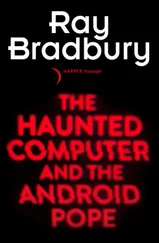The magazine Softside, however, became the spawning ground for Penguin Software, which was founded in the summer of 1981 by Mark Pelczarski. Long before doing that, Mark had been a math and computer science teacher at a high school in De Kalb, Illinois. That was where he met his future wife, Cheryl, as well as Mark and Trish Glenn, all of whom later became partial owners of Penguin Software. Pelczarski is an engaging fellow with tousled brown hair and a mustache who looks most comfortable in jeans and T-shirt. He also knows a lot about computers—he had majored in computer science at the University of Illinois. Two months after he bought his Apple in the fall of 1979, he published his first program—a graphics utility called Magic Paintbrush that allowed one to draw in colors on the Apple’s screen.
Although he had little background in writing, Mark’s interest in and knowledge of microcomputers landed him the job of editor at Softside just about the time Gary and I were starting Broderbund. He and Cheryl stayed in New Hampshire only about nine months before moving back to Geneva, Illinois, to form a software cooperative. Micro Co-op was intended to be a resource that would inform its members about the best software available on the market and help them acquire it for the lowest possible price. The Co-op grew to more than 3000 members, and Mark sold it in 1982.
While at Softside, Mark had made the acquaintance of Dave Albert, who eventually succeeded him as Softside’ s editor. Dave, unlike Mark, was a writer. A journalism major at the University of Iowa, Dave met his wife, Mary, when they both worked for the school newspaper, The Daily Iowan . When Mark decided to form Penguin Software in 1981, he turned to his former Softside comrade, and Dave and Mary moved to Illinois to join him. It turned out to be an effective partnership. Their different backgrounds and skills fit together well. Mark was looking for someone with all-around ability, and a chief editor at a magazine has many of the same responsibilities as a software publisher. Dave and Mary got 10 percent of Penguin’s stock.
Penguin’s first products were graphics tools and animation tools for nonprogrammers as well as programmers, and graphic adventure games. Their products have always been oriented almost exclusively to the Apple II (and now Macintosh) markets. Mark has always subscribed to the “hacker ethic”—low-priced software, tools for programmers, and no copy-protection on software intended for programmers—an attitude that helped attract creative programmers to Penguin from the start.
Mark, Dave, and Mary have a lot in common. One of the traits they all share is a love of play. Mark’s extensive collection of penguin figures has always been in evidence around the office, which has always been located in a house rather than in an office or an industrial building. They still spend a lot of time playing and are not above venturing into the Illinois winter to make penguin sounds and throw snowballs at one another. Their love of games brought them into contact with that inveterate game player Margot Tommervik, who quickly became a friend and introduced the Penguin crew to the Broderbund family.
The whimsical nature of their company reflects the management’s playful nature. We always liked to have them around—Dave, Mary, and Mark could always be counted on for a good game of pickup basketball (Broderbund has always kept a hoop on the premises, at least since we moved to California). And when Broderbunders traveled East they could be sure of a warm reception in Geneva. We wished only that they were closer so that we could see more of them all.
But there was a competitive spirit that lay beneath the surface of our friendships, and it started to show itself in 1984 as the emotional bonds that held us together were seriously challenged by the pressures of an increasingly competitive market. One incident that occurred at the Summer Consumer Electronics Show exemplified this business-related strain on our personal relationships.
Mark and I had talked, as so many of us had, about merging our companies. Nothing came of it, but he had shared with me some of his product plans for the coming years. When he came by our booth at the Consumer Electronics Show, he saw three programs that struck him as being uncomfortably similar to products that he had discussed with me. He was terribly upset and told me so. I was upset, too. After all, we had exchanged information with people for years, just to avoid this kind of conflict. I was absolutely convinced that we had not stolen any ideas. How could he even think that we would do something like that?
Mark and I made up, and we’re still friends, but the fact that such a disagreement could take place at all underscored the fact that an erosion of trust had taken place. By 1984, home software was a different market and a different business from what it had been only a few years before. Where previously there had been enough business for everybody, now there was talk of a software glut, of a shakeout in the offing. The camaraderie of the early days suffered as people’s businesses and careers became endangered. Still, in the midst of all the hue and cry about a shakeout, Mark was sending me his dealer lists, and Ken Williams was swapping financial records with us.
The business was changing, and as always it was changing with a rapidity that took one’s breath away. The laid-back atmosphere that the hobbyists had enjoyed and had propagated through their cottage industries was being swept away. And if you had to point a finger at the company most responsible for ushering in the change, you’d be pointing at IBM.
III THE SOFTWARE INDUSTRY IN THE 1980s
It’s tempting to say that the microcomputer industry grew up very suddenly on August 12, 1981, the day IBM announced its entry into the personal computer market. Although the advent and rapid growth of Apple, Commodore, and Atari had transformed the personal computer business from a small group of hobbyists into a robust and growing industry, the fact remained that the words computer and IBM were synonymous in the minds of millions of people—particularly people in the business community. There is a lot of money to be made in games and entertainment, but the business of America, is, after all, business.
IBM had never shown much interest in personal computers. Their customers were Fortune 500 corporations, not teenage hackers, and their products were multimillion-dollar mainframes, not microcomputers. But the extraordinary success of Apple was not lost on the corporate planners at “Big Blue,” as IBM is known in the computer industry. Its decision to enter the personal computer game legitimized personal computers in the minds of the business community.
The immediate effect of IBM’s entry on home-oriented software companies like Brøderbund, Sirius, and Sierra On-Line was far less traumatic than the fall of Atari a year later. But the impact of the announcement on the public was undeniable: Personal computers were no longer toys. They were on their way to becoming office machines and even household appliances. To the people who bought automobiles and stereos, typewriters and copying machines, these small computers that had been heretofore perceived as nothing more than glorified video game machines now had something to do with real business. After all, International Business Machines itself was building them.
Even Apple, which had been the dominant force in the personal computer industry before IBM put its awesome resources into motion, welcomed the entry. At least it said it did. Apple bought a full-page ad in the Wall Street Journal that said: “Welcome, IBM. . . . Welcome to the most exciting and important marketplace since the computer revolution began 35 years ago. . . .” The official statement from Apple was that IBM’s millions of dollars’ worth of publicity would induce many more people to buy personal computers—and some of those people would buy Apples instead of IBMs.
Читать дальше










